
The delicate appearance of most fern types with their variety of frond shapes and shades can be very deceptive. They can be unbelievably resilient and tough.
These vascular plants, which reproduce by means of spores and not flowers and seeds, have been around for millions of years. They grow in a wide variety of habitats ranging from high mountains, dense forests, dry desert rock faces, bodies of water and open fields. The fact that they can be terrestrial, aquatic, or epiphytic is a further indication of their vast scope of habitat.
We introduce you to a few tough ferns which will do very well in the shade of trees and large shrubs in the garden where other plants battle to grow.
Growing your ferns
• The right spot can have a little gentle sunlight in the morning, but should be mostly shaded and protected during the day.
• Dig over the soil to about 30cm deep and work in lots of organic matter like leaf mould, compost and palm peat. Also add a generous dusting of bone meal to strengthen the shallow-rooting rhizomes.
• If you can lay your hands on wellrotted pine needles, add it too, or mix in milled bark chips, as ferns like acidic soil.
• The ideal is to create a rich, but light and well-draining medium – ferns love moist soil and not heavy waterlogged soil.
Mother fern
Asplenium bulbiferum is also called the hen-andchicken fern, as this robust fern’s fronds resembling carrot leaves and sometimes features little plantlets (bulbils) at the edges of each frond. Where they fall, they root. This fern from New Zealand is semi-deciduous and can tolerate short dry periods. Size 120cm x 90cm.
هذه القصة مأخوذة من طبعة June 2023 من The Gardener.
ابدأ النسخة التجريبية المجانية من Magzter GOLD لمدة 7 أيام للوصول إلى آلاف القصص المتميزة المنسقة وأكثر من 9,000 مجلة وصحيفة.
بالفعل مشترك ? تسجيل الدخول
هذه القصة مأخوذة من طبعة June 2023 من The Gardener.
ابدأ النسخة التجريبية المجانية من Magzter GOLD لمدة 7 أيام للوصول إلى آلاف القصص المتميزة المنسقة وأكثر من 9,000 مجلة وصحيفة.
بالفعل مشترك? تسجيل الدخول
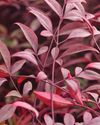
FIRE AND Feathers!
On a dreary winter's day, a screen of fiery and feathery leaves puts up a fight against dullness!
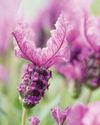
GET THE ladies in!
At this time of year, early-flowering shrubs vie with each other to get the most attention. We say: Trust those with female names for frills and butterflies. They go the extra mile to flower their hearts out.

Vegetable Soups and dumplings
Vegetables make the most delicious soups and classic combinations are always a winner.

Yummy sweet potatoes for your good health
Boiled, baked or braaied, sweet potatoes (Ipomoea batatas) are a delicious and healthy winter comfort food. Just a dollop of butter, a little seasoning and you are good to go.

Pretty and functional
If cooking is your main thing, you would probably be more interested in the culinary value of the three herbs and some of their varieties we are describing.

Dried Seedheads & Pods
Autumn and winter are the best times to see what flowers produce the best seedheads that can be left on the plants to feed the birds and bugs and for harvesting for dried arrangements.
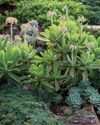
SO MANY FACES and so many choices...
Whoever associated a Cotyledon orbiculata (pig's ear) with the ear of a pig obviously did not know about all the varieties and cultivars this species in the genus Cotyledon has.
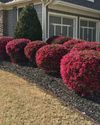
COLOURFUL Cold Weather WINNERS!
If it comes to a vote, these dependable shrubs will be the top candidates for prime performance in winter and in other seasons...
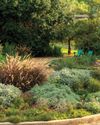
What makes a garden sustainable?
It is interesting to note that the United Nations defines sustainable development as: “development that meets the needs of the present without compromising the ability of future generations to meet their own needs”.

Nurturing NATURE-The Story of Kraal Garden's Transformation
Nestled within Prince Albert's rustic embrace lies a gem that is a testament to the transformative power of human vision and nature's bounty.